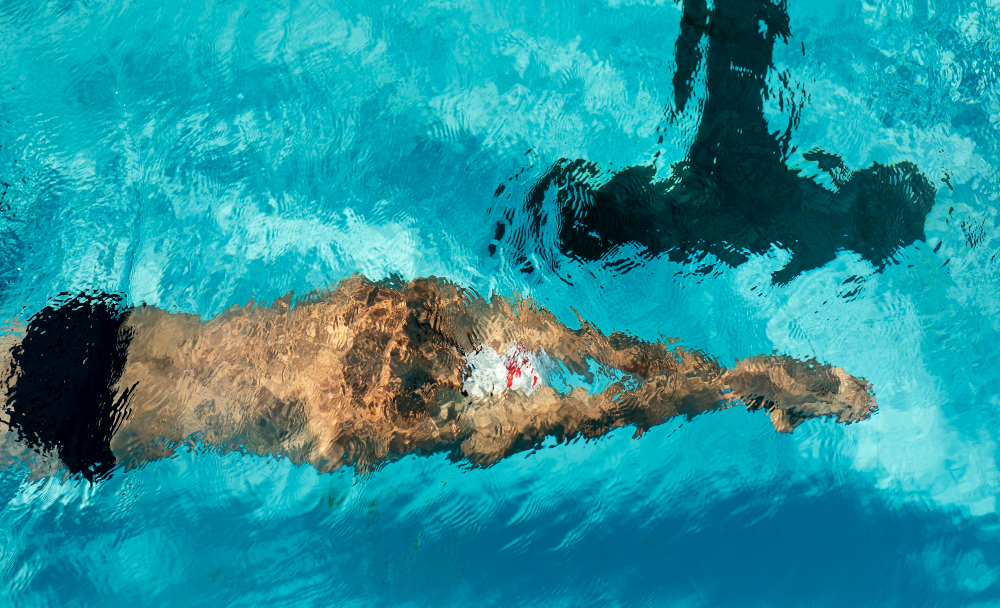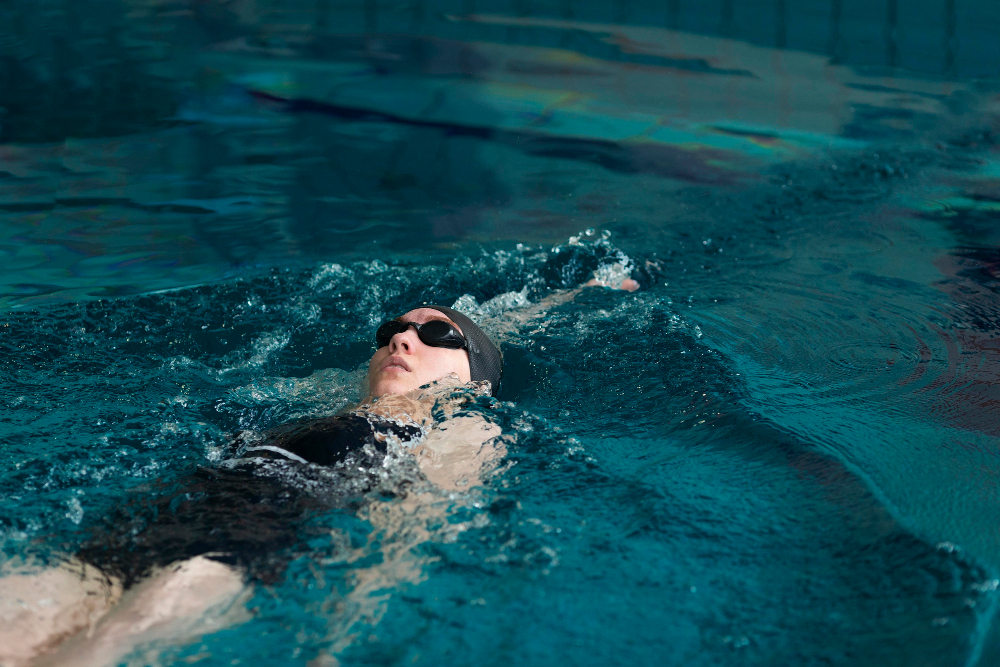For decades, water safety has relied on the vigilance of lifeguards and the responsiveness of bystanders. But scientific advances are revealing a deeper, more urgent truth: our brains aren’t wired to respond to drowning as quickly or clearly as we’d hope. Neuroscience of drowning exposes a range of biological and cognitive delays that affect perception, awareness, and movement during aquatic emergencies. It’s not a question of learning to swim or being careful—it’s a question of going beyond the slowing of our danger detection due to neurology. From sensory lag to hormonal motor impairments, the brain is too often a bottleneck in emergency situations. This is where technologies such as Swim Sense shine—and it’s not by performing the task for people, but by helping them with instant biometric emergency detection. With knowledge of the weaknesses of the brain, technologists are able to design wiser, quicker, more intuitive devices that keep people alive.
Neural Delay and Emergency Recognition
One of the most dangerous aspects of drowning is how subtle and fast it can be. Unlike violent or noisy accidents, drowning often occurs silently and in mere seconds. A person may slip under the water without a splash, while others nearby are completely unaware. From a neuroscience standpoint, this isn’t just situational—it’s biological. The brain’s central nervous system has a built-in latency when interpreting sudden changes in sensory input. When submerged, the brain must process a cascade of new stimuli—pressure, lack of oxygen, disorientation. This influx creates cognitive “lag,” a delay in translating sensation into awareness (Journal of Cognitive Neuroscience, 2021). This means that even if someone notices something wrong, their brain may not register it as an emergency until it’s too late. Swim Sense addresses this by monitoring critical signals—like oxygen saturation and pulse rate—that trigger an alert faster than the brain can react. It bypasses human delay, providing a high-tech safety net precisely when our biology fails us.
Auditory Cues and the Silence of Drowning
When people think of emergencies, they think of yelling, screaming, or calls for help. But drowning is often mysteriously quiet. The victims are not able to scream—they are using all their strength just to inhale. Neurologically, this represents a zone of risk because detection of threat is very much reliant upon the auditory cortex. According to existing research (Neurobiology of Sensory Systems, 2022), our brains immediately respond to loud and sharp noises as threats. In drowning scenarios, the lack of such auditory signals leads to catastrophically late reactions from witnesses. Hence, watchtower systems cannot be dependent on noise only. That is why such devices as Swim Sense are founded upon smart swimming safety technologies such as visual alarm, automated flotation, and biometric emergency detection. These are engineered to activate when quiet surrounds them. In acknowledgment of the brain’s reliance on sound, contemporary safety technology makes up for it by employing audible and visible warnings—guaranteeing assistance is called for even if no noise triggers it.
Stress Hormones Inhibit Physical Responses
Panic triggers biology that has the potential to sabotage survival. When an individual begins drowning, their amygdala discharges stress hormones like cortisol and adrenaline into their body. While these chemicals are designed to help us survive danger, they have the tendency to do the opposite when one is in water. The sudden hormonal reaction can impair coordination, focus, and even breathing pattern (Nature Neuroscience, 2020). They will lock up or move ineffectively, with jerky movements—far from the histrionic flailing popular culture has conjured up. This neurological freeze response is especially hazardous because it conceals pain from onlookers as well as from sensors. That’s why motion detection alone is insufficient for equipment. Swim Sense features biometric sensors that track vital signs in a motionless state—particularly heart rate and oxygen levels—so that an unresponsive, chilled swimmer who would barely twitch would remain detected as being at risk. Low-grade stress taking control of our motor function enables wearable safety tech to intervene where the brain cannot.
Reduced Cognitive Processing in Water Emergencies
In life-or-death emergencies, the brain’s prefrontal cortex—the decision-making and judgment section of the brain—gradients into almost-nonfunction. Instead, the limbic system, responsible for primal reactions, takes over. While this system is able to trigger fight-or-flight reactions, it is not capable of making subtle decisions. In a drowning accident, this brain override leads to poor decisions: trying to breathe underwater, fighting off rescuers, or failing to turn on an SOS device. Science published in Frontiers in Human Neuroscience (2019) explains why drowning victims are unable even to concoct straightforward escape strategies. Automation comes into play here. Devices like Swim Sense integrate SOS buttons, automatic flotation, and radio-induced distress signals to disengage cognitive action. The system takes over where the swimmer fails. This integration of neuroscience into product design ensures that technology won’t cause the brain to be at its best when errors occur—it obscures when the brain’s worst.
Visual Processing Impairments in Water
Vision is our most trusted sense, but in aquatic environments, it’s unreliable. Overcrowded pools, splashing, and reflective surfaces can overwhelm the visual cortex of the brain so that subtle changes become impossible to see or find a swimmer in distress. Throw in poor lighting or dirty water, and even the best lifeguard will miss those important signals. Neuroscience shows that stress slows down visual processing speed and focus on a small field—”tunnel vision” (Current Biology, 2021). That is why modern safety systems must supplement visual recognition by multi-sensory notification. Swim Sense bracelet has a flashing light, an orange inflatable rescue bag, and a loud high-pitched sound alarm. These notifications use multiple brain channels—vision, touch, and hearing—to achieve maximum detectability. By overcoming the visual weaknesses of the brain, intelligent safety devices enhance swimmers’ visibility and cut down response time, even in sensory-challenging environments.
Conclusion
The future of aquatic safety doesn’t just lie in better swimmers or stricter supervision—it lies in understanding the neuroscience of drowning. The brain’s natural limitations during emergencies—sensory overload, hormonal impairment, delayed cognition—are now thoroughly documented. Each of these has informed a new generation of water safety tools. Swim Sense exemplifies this evolution, offering a proactive, brain-aware approach to lifesaving. It doesn’t wait for someone to shout, thrash, or press a button. It watches the body, interprets the signals, and acts immediately. This isn’t just a better product—it’s a shift in strategy. We are moving from a world where humans had to be perfect responders to one where technology supports human biology. By marrying neuroscience with engineering, we aren’t just improving survival rates—we’re rewriting the rules of aquatic safety. And with every update, Swim Sense gets us one step closer to an ecosystem where drowning isn’t just unlikely—it’s preventable.




